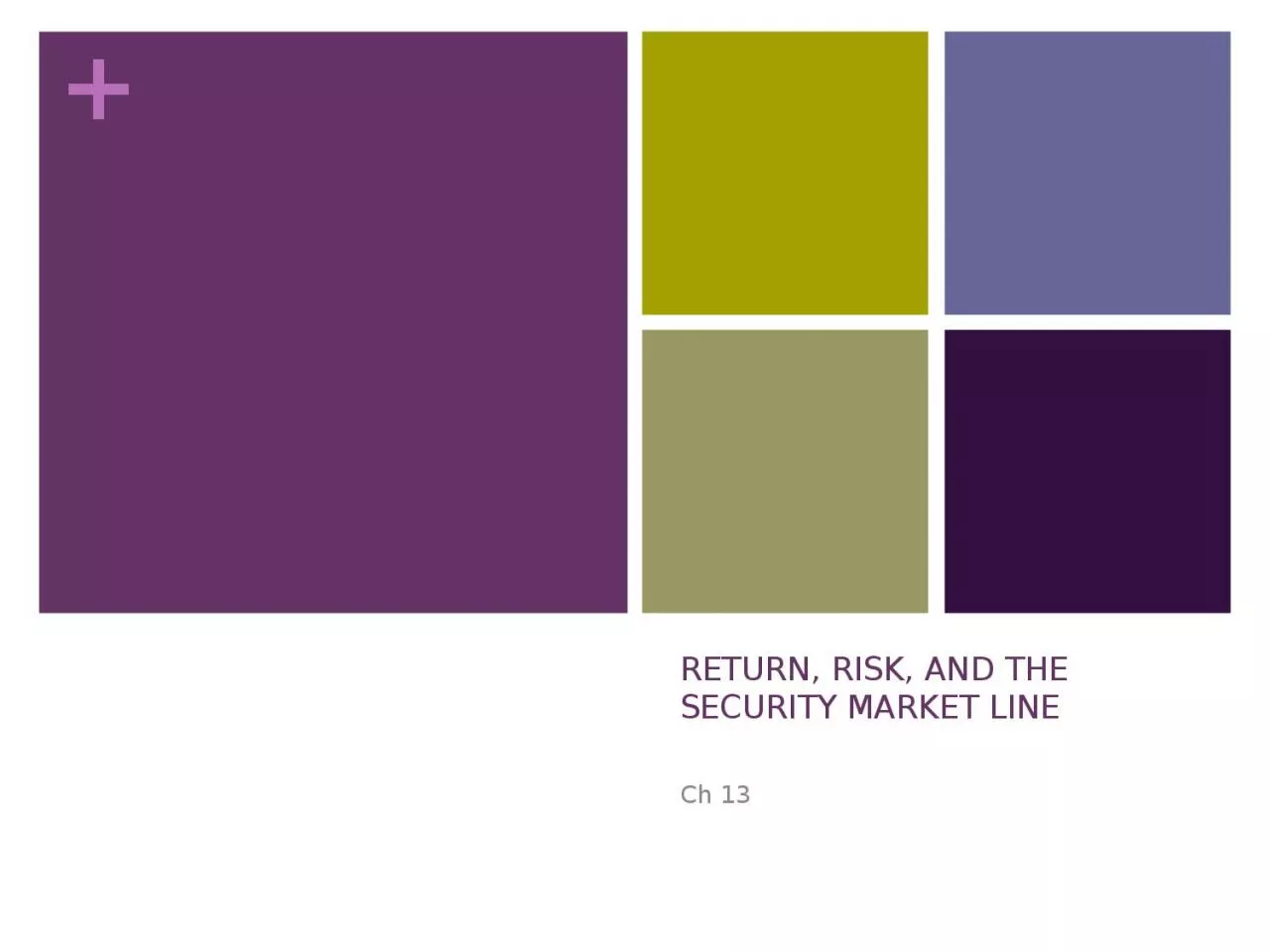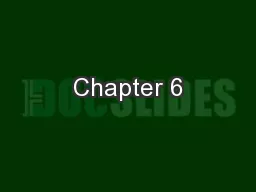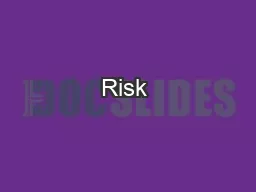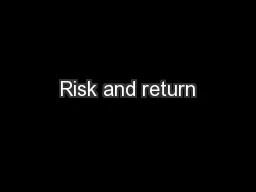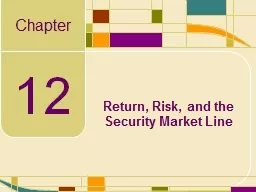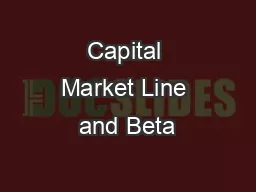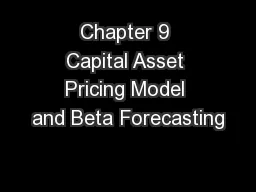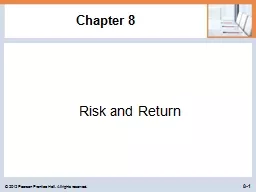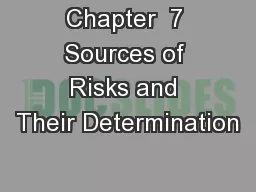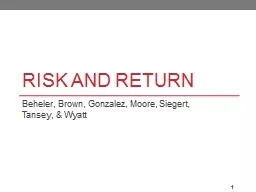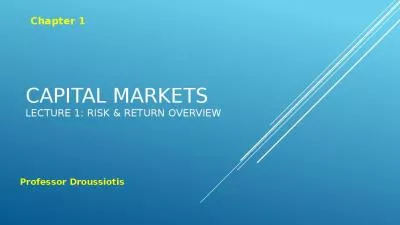PPT-RETURN, RISK, AND THE SECURITY MARKET LINE
Author : harmony | Published Date : 2023-11-07
Ch 13 we have concentrated mainly on the return behavior of a few large portfolios We need to expand our consideration to include individual assets Specifically
Presentation Embed Code
Download Presentation
Download Presentation The PPT/PDF document "RETURN, RISK, AND THE SECURITY MARKET LI..." is the property of its rightful owner. Permission is granted to download and print the materials on this website for personal, non-commercial use only, and to display it on your personal computer provided you do not modify the materials and that you retain all copyright notices contained in the materials. By downloading content from our website, you accept the terms of this agreement.
RETURN, RISK, AND THE SECURITY MARKET LINE: Transcript
Download Rules Of Document
"RETURN, RISK, AND THE SECURITY MARKET LINE"The content belongs to its owner. You may download and print it for personal use, without modification, and keep all copyright notices. By downloading, you agree to these terms.
Related Documents

